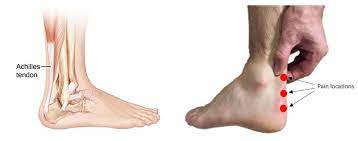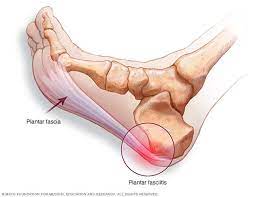Running can be a great escape for many of us living stressful lives. It can contribute to a healthy lifestyle and can reduce the likelihood of death from all causes by as much as 30%. Unfortunately, runners often do suffer from injuries. According to an article in Runner’s World, 46% of all runners will report an injury over the course of a year, with the majority of those being in the lower limb. Being able to recognize the symptoms of these injuries and knowing some basics as to how to treat them can reduce the impact that these injuries have on your running.
Many factors can contribute to these injuries, but as runner and physiotherapist, the main reasons that I see in clinic include:
- Sudden change in the volume of running (how much you run)
- Sudden change in the intensity of running (how hard you run)
- Sudden change in running surface (where you’re running)
- Sudden change in footwear
- Poor running posture (how you run)
These factors (and others) can all lead to a dreaded running injury. Let’s take a deeper look at 3 common running injuries and some simple suggestions that can lead to improvements in each of them.
- Achilles tendonosis is typically an overuse injury meaning that it doesn’t happen from one distinct event, instead it comes on over time due to repeated stress on the large tendon which connects your calf muscles to you heel bone.

Common Causes
- increase in volume or intensity of training
- increase in hill training
- change in footwear
Symptoms
- pain and stiffness in the lower part of the back of the calf
- Stiffness is often worse upon getting up from bed or when sitting for long periods
- Pain with pushing off during walking/running/stairs
Treatment
- Volume/intensity reduction of running (can often continue running, but will likely need to modify)
- Stretching and strengthening exercises to improve flexibility and strength
- Footwear changes such as increases the “offset” of the shoe, or perhaps adding a heel lift to the shoe (be cautious with sudden footwear changes however)
- Calf compression sleeves can be helpful and supportive braces such as the “achillotrain” can reduce symptoms
- Techniques commonly used in physiotherapy such as dry needling and acupuncture, instrument assisted soft tissue release, and manual therapy to address any other contributing to the condition
- Plantar Fasciitis is another common running injury which results in irritation to the thick band on connective tissue in the arch of the foot

Common Causes
- increasing your mileage or intensity of running
- changing your footwear too quickly (or not changing it at all)
- altered mechanics during running.
Symptoms
- pain in bottom of foot between the heel and toes (arch of foot),
- pain which is the worst with the first few steps in the morning and after sitting long periods
- pain while walking.
Treatment
- modifications in running program such as reducing mileage and intensity
- change in footwear might be necessary (a more padded shoe or potentially a more supportive shoe might be a necessary TEMPORARY measure)
- a night splint (worn to bed) has been shown to be an effective treatment
- shockwave therapy is an extremely effective treatment technique that can be performed by a physiotherapist
- manual therapy provided by a physiotherapist and proper exercise prescription to address any muscle imbalances are also important to address
- Runner’s knee is characterized by a dull ache around the front part of the knee or knee cap. There is often an irritation of the cartilage on the back of the knee cap or the soft tissues surrounding the knee.

Common Causes
- increase in volume of running or intensity of runs
- a change in footwear or running surface
Symptoms
- pain on the front of the knee
- pain with running, going up and down stairs, when squatting/kneeling
- grinding when bending knee
- swelling in front of knee
Treatment
- modifying or adjusting your running schedule
- strength and mobility exercises focused on hips and knees
- physiotherapy to address muscle imbalance, strength deficits, mobilize effected tissues, acupuncture for pain and swelling
- a brace can help to reduce swelling and improve tracking of the knee cap
If you have symptoms of any of the injuries above or any other running injury. Contact one of ourphysiotherapists for diagnosis of your condition and visit our website to ensure that you get the right brace!

